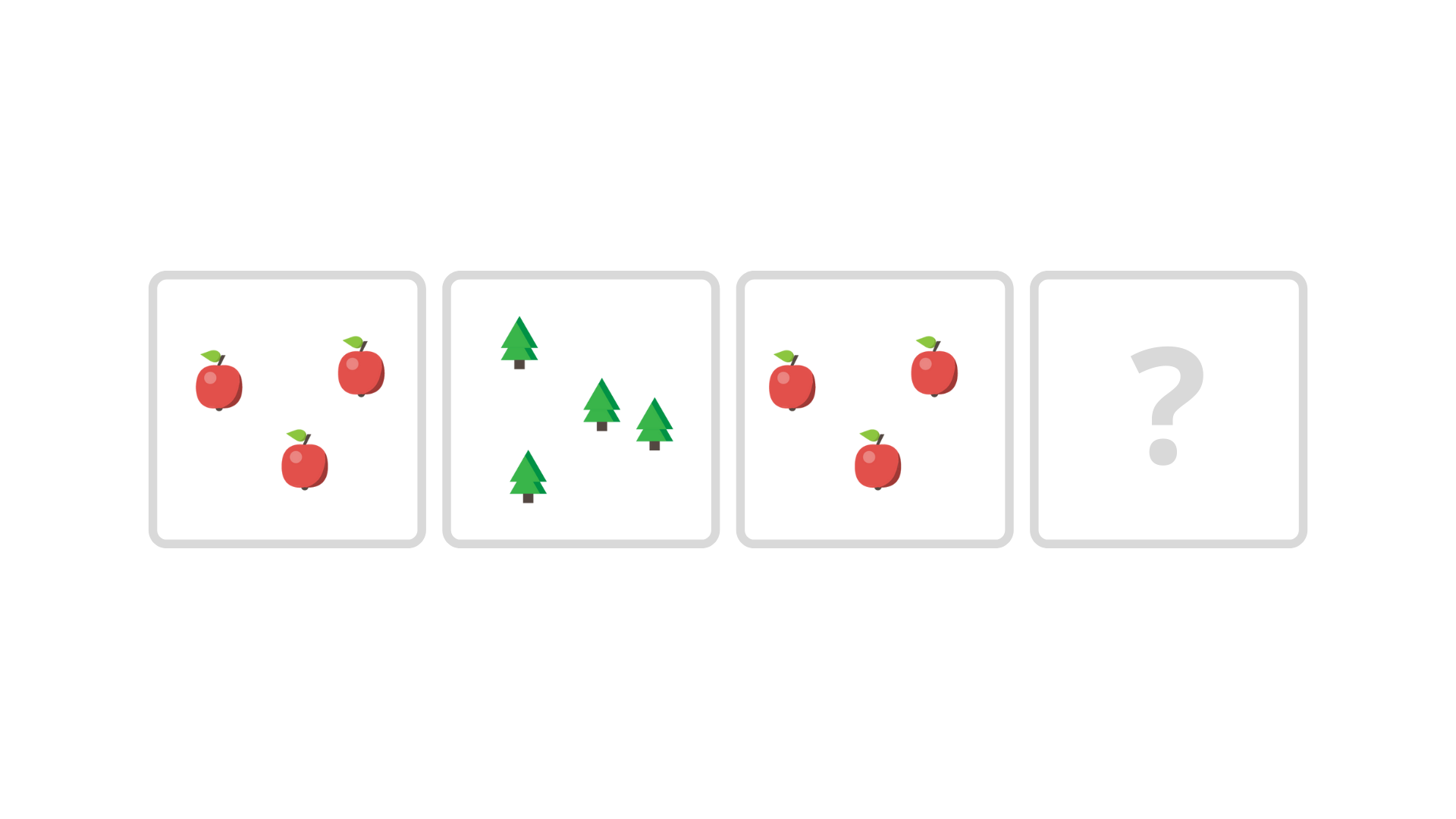Tips on how to use this exercise at home and at school.
Early math concepts
In this exercise, the child first looks at the top row of pictures that alternate. The challenge is to figure out the nature of the alternation.
Is it the colour, the number or the arrangement? The situation is different each time.

Why is this exercise important?
In this exercise, the child is looking for an algorithm. That is, the principle of order, which requires understanding from the presented pictures according to which principle they are arranged in a given order and to find out which picture is missing in the series.
The child analyses the pictures and looks for a logical relationship between them, but this may be based on a different principle each time and the child must follow the rules. This activity also requires intermodality, i.e. the ability to use analogical thinking and to combine different information. The child must also understand the sequences of events, be able to identify the steps and then carry them out, while not skipping or skipping any. This is also important for later orientation in numbers and understanding the relationships between them.
Who is the exercise suitable for?
Generally, it belongs in preschool and early school play. In addition to pre-number logic ideas, language skills are developed at the same time. The exercise also helps to practise the principle of ordering (seriality) and the ability to use analogical thinking, combining different information (intermodality).
Methodological recommendations
Either read aloud the instructions to the child, play them from the app or let the child read them by themselves.
In the instructions, the child already has some hints about what to look for in the pictures. They also have to react flexibly to the changed pictures in the different exercises, because the sorting algorithms change. The colours of the objects can be confusing. The child may react hastily to the dominant visual perception. The important thing is to stop, think and then act. Have the child describe out loud how they think, what all "ran" through their head, and why they finally made the decision they did.
The difficulty is different when there is a missing picture at the end of the line (the easier option), but no way to check for accuracy. The more difficult option is the missing picture in the middle (but with the possibility of checking for correctness if the picture follows the row) or at the beginning.
Tips for similar activities outside the app
This type of task can be practised on stringing beads by completing the row, where the child has to work out the combination to follow.
This also includes playing board games where procedures and rules need to be followed.
The child can also build with blocks according to a pattern and so on.